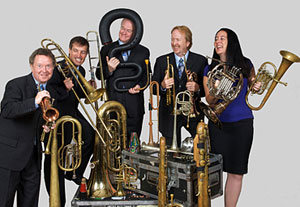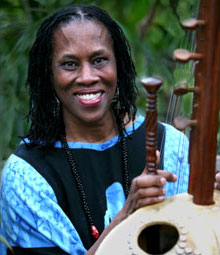Katie West, Senior Program Officer for Mid Atlantic Arts Foundation (MAAF), is the Founding Director of the Pennsylvania Performing Arts on Tour (PennPAT) Program. West has been a speaker on subjects including marketing for performing artists, grantwriting and partnership, and has served on grant review panels, boards of directors and advisory and host committees for various organizations and events. In addition to her administrative work, West has danced professionally, taught dance, and written dance reviews and feature stories for daily and bi-monthly publications.

Rennie Harris Puremovement
PennPAT increases opportunities for professional Pennsylvania performing artists to obtain successful touring engagements through a multi-layered approach that includes grants to presenting organizations, grants to artists, professional development for artists and marketing support.
2. How long has the program been in existence?
Our first approved roster of artists was published in the fall on 1997 and PennPAT began offering grants for touring engagements in 1998. The program, which is administered by Mid Atlantic Arts Foundation, was developed through a public-private partnership between Pennsylvania Council on the Arts, the William Penn Foundation, The Pew Charitable Trusts and The Heinz Endowments. These partners went through a series of planning meetings and public meetings during the mid-90s to plan and develop a program that would meet the needs of the presenting/touring field and would also satisfy each of their own internal goals.
3. What does PennPAT offer the public?
PennPAT provides support for an average of 150-200 performances each year, across the mid-Atlantic region and Ohio. Many of these performances would not take place without the financial support we provide. View a list of upcoming PennPAT-supported performances.
4. What does PennPAT offer the artist?
Artists are the primary focus of the PennPAT program and we offer a multitude of opportunities for professional and emerging performing artists based in Pennsylvania. First, we offer workshops for artists at locations across the state on subjects related to touring, such as print and electronic marketing, working with presenting organizations, how to present yourself in a showcase, etc.
Pennsylvania-based performing artists and arts groups may apply to PennPAT annually. The applications are reviewed by a panel of experts from across the Unites States, based on artistic merit and touring readiness. Those selected by the panel are included in the PennPAT Artist Roster, making them eligible for two types of grant support: 1) direct grants to the artists for projects that will enhance their marketing or tour management capabilities; 2) presenting organizations from across the region that hire the artists to perform, may be eligible for grants to support up to half of their fees, making them very attractive for booking. In addition, whenever possible PennPAT creates opportunities for roster artists to showcase (short performances at events where presenting organizations gather, called booking conferences). This raises their visibility and allows those who might hire them to see them perform live. We also provide roster artists with one-on-one advice, training and tools for managing the business side of touring.

The Cashore Marionettes
PennPAT workshops are generally open to anyone interested. Artists must be Pennsylvania residents to apply for the roster. The roster artists come from all across the state – currently approximately 60% are from the Philadelphia 5-county area, 20% are from the Pittsburgh region and 20% are from other parts of the state.
6. What are the range of/kind of performing artists that make up your roster?
We include all performing arts. Currently there are 116 artists or groups on the roster, including 29 dance, 71 music and 16 theater. In dance, we have modern/contemporary dance, ballet, hip hop, tap, flamenco, African, Ukrainian and Chinese dance. Music is our largest group of artists, including a wide range of classical – from solo artists through symphony orchestras; jazz music; traditional ethnic forms such as klezmer, Celtic, polka, Balkan and Brazilian music; folk music; singer/songwriters, etc. In theater we have storytellers, marionettes, movement theater artists, children’s and family performers, puppetry, blacklight theater and classic theater.
7. How did you come to be affiliated with PennPAT?
I was managing several grants programs at the Illinois Arts Council in Chicago when I saw the initial job listing for PennPAT. It was, and continues to be, the only program of its kind anywhere in the U.S. I was excited about the position as it was a good fit for my experience in grant making and presenting dance performances. My background as a dancer and teacher also gave me insight and perspective into the special challenges performing artists face in trying to make a living with their art. I applied for the position and was hired by Mid Atlantic Arts Foundation to manage the program and set up an office in Philadelphia.
8. You are administered by Mid-Atlantic Arts Foundation. Tell us about that relationship.
Mid Atlantic Arts Foundation is based in Baltimore and provides arts programs and services throughout nine states & jurisdictions (Delaware, District of Columbia, Maryland, New Jersey, New York, Pennsylvania, U.S. Virgin Islands, Virginia, and West Virginia). PennPAT is a program of Mid Atlantic Arts Foundation, but since the main constituency for PennPAT is Pennsylvania artists, we decided that it needed to be managed from an office in Pennsylvania. Currently we have two full-time and one part-time staff in the Philadelphia office. We work closely with the Baltimore staff as well, coordinating our marketing and development efforts. The original PennPAT funding partners – Pennsylvania Council on the Arts, the William Penn Foundation, The Pew Charitable Trusts and The Heinz Endowments – remain involved with the program as well. They serve as an active advisory committee that meets several times a year with staff to provide oversight and guidance. The program would not exist without their ongoing support.
9. Who are/have been some of your more popular artists?
From the Philadelphia area, probably Charlotte Blake Alston, Leon Bates, Cashore Marionettes, Chestnut Brass Company, Koresh Dance Company, Philadanco and Rennie Harris Puremovement have received the most touring engagements through the program. Walnut Street Theater just began offering programs for touring last year and did very well also. From elsewhere in the state, the David Leonhardt Jazz Group with the Shelley Oliver Tap Dancers, Duquesne University Tamburitzans, Dan Kamin, Paragon Ragtime Orchestra, the River City Brass, Simple Gifts and Squonk Opera have all been successful. Actually, over 80% of the artists on the current PennPAT roster have toured with program support.

Chestnut Brass Company
Two things come to mind…First, from 2001 to 2009 we held annual roster artist retreats. These were 2-day events that gathered roster artists from across the state and provided them with professional development, one-on-one consultations and networking opportunities, in a non-competitive and nurturing environment. The sense of community and sharing that grew out of these retreats was phenomenal. Not only did the artists learn more about the business of touring, but they also performed for each other and developed artistic collaborations resulting in the creation of new work. Unfortunately, due to cutbacks in funding as a result of the current economic climate, we have had to suspend the retreat for now.
A second memorable experience (or series of experiences) takes place when one of the regional booking conferences is held within our region and we have the resources to really promote Pennsylvania artists beyond our borders. For example, the Performing Arts Exchange is a booking conference for presenters in the eastern United States. In recent years, it has been held in or near Pennsylvania several times. In 2004 it was in Pittsburgh, in 2006 it was in Baltimore and in 2010 it returned to Pittsburgh. Each time, we have been able to use our resources to create an array of showcases for roster artists during the conference, creating high visibility and a real celebration of the wealth of outstanding talent we have here in Pennsylvania. We’re hoping the conference will come to Philadelphia in the future.
11. Tell us about the PennPAT roster.
Artists are accepted through a competitive process that considers artistic merit and touring readiness – only about half the artists who have applied have been accepted, but there is no limit. We add new artists to the roster each year. Some artists on the current roster have been included since 1998; others are brand new to the program. We started with 78 artists and went up to a high of 160 in 2009. Currently there are 116 artists /groups on the roster. Each artist has a listing that includes basic information about what they perform, as well as booking contact information, fees, technical requirements and a video or audio sample. We also include links to the artists’ own websites and have a Facebook page that we use to promote the roster artists.

Charlotte Blake Alston
There have been two major changes at PennPAT, both relating to the size of the program. When we first began, we started small and gave artist grants and touring grants only within Pennsylvania for the first two years. We saw how successful the program could be, and with increased support from our funding partners, we expanded the marketplace for artists by providing grants for touring engagements in a 10-state/jurisdiction region – the mid-Atlantic plus Ohio (because it borders PA in the west). Our budget doubled in just one year and we added one additional staff member focused on marketing and artist services. The program continued to grow slowly by an additional 30% over the next eight years until 2009, when the economic downturn began to impact our resources. In 2009/2010 we saw a budget decrease of more than 35% and lost one staff position. During better economic times, we were able to add in program enhancements, like showcases, special grants supporting international engagements for roster artists, travel grants for presenters who wanted to see a roster artist perform, and the retreat. All of these activities complemented each other and worked in concert to help artists get more and better touring engagements. Now, with fewer resources, we have had to suspend or cut back on these activities and focus on the core of the program – the grants to artists and presenters. We continue to seek grant support with the goal of reinstating some or all of these enhancements.
13. What does the future hold for PennPAT?
The program relies on continued support from our core funding partners, which we must renew every year or two, as well as additional funding from corporate, state and foundation sources. Right now, it looks likely that our budget will remain flat for at least the next two years. We hope to recover from the downturn and bring the program budget back up to previous levels as soon as we can, enabling us to better reach our goal of increasing opportunities for Pennsylvania’s finest performing artists.
* The banner photo is of Lucidity Suitcase International.

